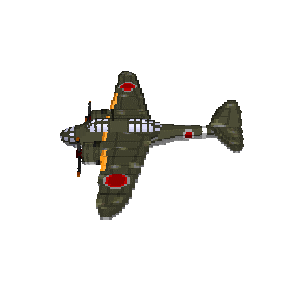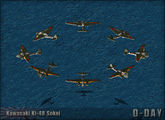Difference between revisions of "Kawasaki Ki-48 Sokei"
From D-day: wiki
m |
|||
| (2 intermediate revisions by the same user not shown) | |||
| Line 19: | Line 19: | ||
|content= | |content= | ||
| − | The | + | The Ki-48 Sokei was the result of a 1937 Japanese Army requirement for a new fast light bomber. The prototype was ready in July 1939 and demonstrated great maneuverability being able to perform loops and rolls like a fighter plane. It was soon put into production and was first used in China were its speed and maneuverability made it all but immune to the Chinese fighters of the time. By 1942 it was having to deal with newer Allied fighters and could no longer simply outrun the enemy, even so it continued to be used right up until the end of the war. |
| − | |||
| − | + | ==References== | |
| + | *[http://en.wikipedia.org/wiki/Kawasaki_Ki-48 Wikipedia] | ||
| + | }} | ||
| − | |||
| − | + | {{Timeframe | |
| − | + | |earlywar=yes | |
| + | |totalwar=yes | ||
| − | |||
| − | |||
| − | |||
}} | }} | ||
| Line 42: | Line 40: | ||
image:ki48.jpg{{!}} | image:ki48.jpg{{!}} | ||
}} | }} | ||
| + | |||
| + | |||
| + | {{Box | ||
| + | |title=Comments | ||
| + | |content= | ||
| + | |||
| + | <comments voting="Plus" /> | ||
| + | |||
| + | }} | ||
| + | |||
{{JapanNav}} | {{JapanNav}} | ||
Latest revision as of 11:15, 23 January 2015
| ||||||||||||||||
History
The Ki-48 Sokei was the result of a 1937 Japanese Army requirement for a new fast light bomber. The prototype was ready in July 1939 and demonstrated great maneuverability being able to perform loops and rolls like a fighter plane. It was soon put into production and was first used in China were its speed and maneuverability made it all but immune to the Chinese fighters of the time. By 1942 it was having to deal with newer Allied fighters and could no longer simply outrun the enemy, even so it continued to be used right up until the end of the war.
References
. . . .
Time Frames
| 1930 - 1940: Pre-War |
1940 - 1942: Early-War |
1942 - 1944: Mid-War |
1944 - 1945: Late-War |
1945 - 1960: Post-War |
1930 - 1960: Total-War |
|
| Buildable | Yes | Yes | ||||
| Bonus Crate |
. . . .
Comments
. . . .


Enable comment auto-refresher